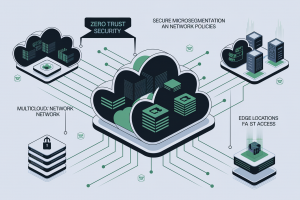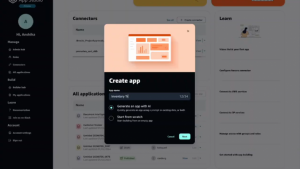Apple iPad Mini: A Poorly Executed Defensive Play
![]() Over the past few years, you might say that I’ve become something of a fan of Apple products. There was a time when I wouldn’t give the company’s products a second look, but today, I carry an iPhone 5, iPad 3 and MacBook Pro Retina 15. I have reasons that I use these devices, though. For the MacBook Pro, the hardware is simply top notch and I need a robust, reliable machine for my work. I use the iPhone and iPad because the hardware is easy to use and the ecosystem around those devices is clean and robust.
Over the past few years, you might say that I’ve become something of a fan of Apple products. There was a time when I wouldn’t give the company’s products a second look, but today, I carry an iPhone 5, iPad 3 and MacBook Pro Retina 15. I have reasons that I use these devices, though. For the MacBook Pro, the hardware is simply top notch and I need a robust, reliable machine for my work. I use the iPhone and iPad because the hardware is easy to use and the ecosystem around those devices is clean and robust.
So, you might think I’m a total Apple devotee that thinks that the company can do no wrong. That is not the case. As I always have, I remain firmly independent.
It is in this spirit of independence that I discuss the iPad Mini, which Apple released on October 23.
A Defensive Play
For quite some time, Apple had publicly stated that anything smaller than the traditional iPad was “DOA.” Obviously, that hasn’t stopped people from buying 7” Kindle Fire devices. According to estimates since Amazon doesn’t release sales figures, the various Kindle Fire devices have captured somewhere between 14% and 22% of the tablet market.
That’s not a small chunk of the market, particularly in a space Apple clear wants to own. Between that and the looming threat from Microsoft, not to mention the various and sundry non-Fire Android-based devices that have flooded the market at a price point lower than iPad, it seems like the iPad Mini is purely a defensive play to have a product in the space.
This seems particularly true given the iPad Mini’s surprisingly high price as compared to its 7” brethren. At a minimum price of $329 for a product that many predicted would arrive on the market in the $250 range. When compared with the Kindle Fire, which carries an entry price tag of $159, $329 is a pretty steep price.
It seems as if Apple simply wanted to have a play in what seemed to be a burgeoning space between the smartphone and the full-sized tablet. This is potentially a case in which Apple’s hefty profit margins work against the company.
Poor execution
Apple is known for maintaining pretty hefty margins on their hardware. The fact that they’ve been able to maintain significant margins and record sales is a testament to the quality of the iPad and the ecosystem around it. I believe that both are equally important.
Apple has gone on record to say that their margins with the iPad Mini are lower than they like. However, even with these lower margins and a higher cost than competing tablets, Apple has managed to release what is clearly a mediocre tablet.
The tablet below compares the two Kindle Fire devices with the entry level iPad Mini.
| Feature/Model | Kindle Fire 7” | Kindle Fire 8.9” | iPad Mini |
| Screen resolution | 1280 x 800 | 1920 x 1200 | 1024 x 768 |
| Pixels per inch | 216 ppi | 216 ppi | 163 ppi |
| Storage | 16 GB | 16 GB | 16 GB |
| WiFi | Dual-band, dual-antenna | Dual-band, dual-antenna | Dual-band, dual-antenna |
| Ecosystem | Good | Good | Excellent |
| Price | $199 | $299 | $329 |
There are other models available for the Kindle Fire and iPad Mini devices; this is a look at just the entry level options. Other options include additional storage space as well as 3G and LTE connectivity options.
Frankly, given Apple’s penchant for one-upping their competitors at every turn, the iPad Mini is, well, mediocre. It’s a lesser entry into an increasingly crowded space that stands out only because of the brand name and the ecosystem, which is second to none at this point.
Summary
I’m not sure that Apple realizes that it’s playing in a value, race-to-the-bottom space in the smaller tablet space. The company released an inferior product into the space and priced it as a premium. While I fully expect people to flock to the device, this doesn’t feel like the kind of entry that Apple would normally make. It’s competing against an established player—Amazon—that is willing to sell its products at cost and make money on the sale of content. It’s rare to see the company in a position in which it feels it needs to take such a defensive posture and even more rare for it to do so without a leading product in the space.
A message from John Furrier, co-founder of SiliconANGLE:
Your vote of support is important to us and it helps us keep the content FREE.
One click below supports our mission to provide free, deep, and relevant content.
Join our community on YouTube
Join the community that includes more than 15,000 #CubeAlumni experts, including Amazon.com CEO Andy Jassy, Dell Technologies founder and CEO Michael Dell, Intel CEO Pat Gelsinger, and many more luminaries and experts.
THANK YOU













